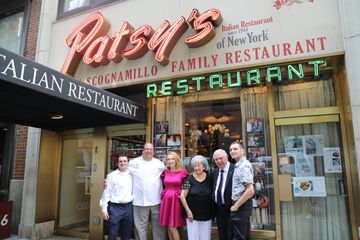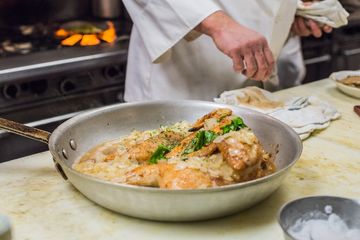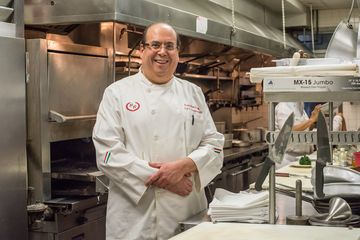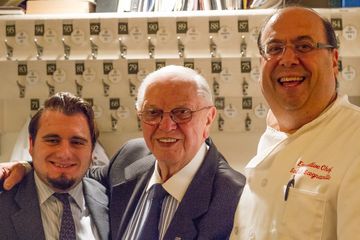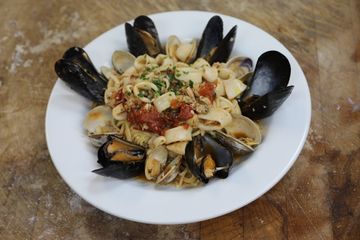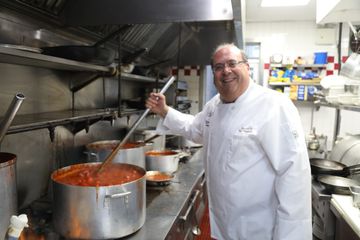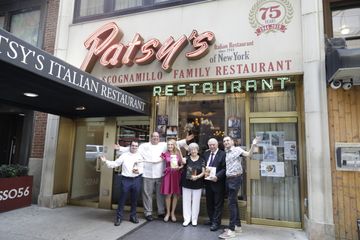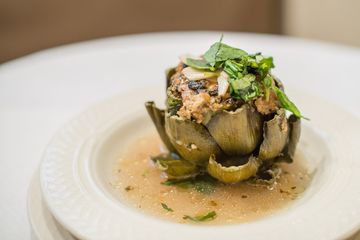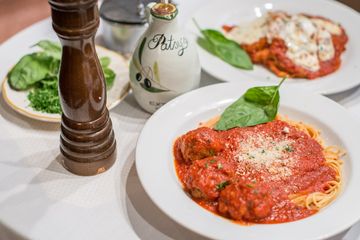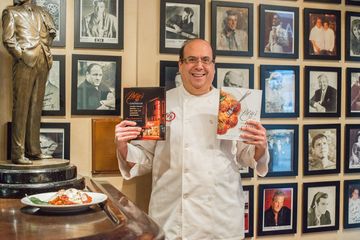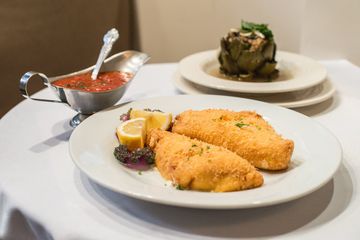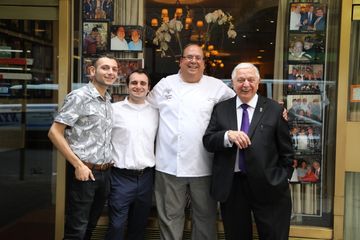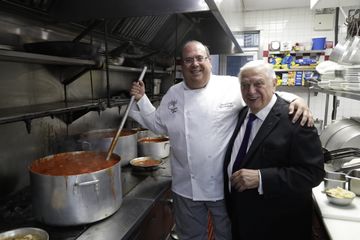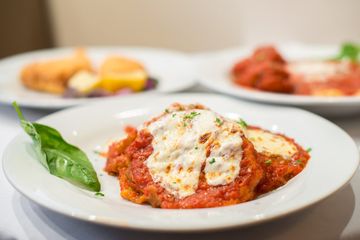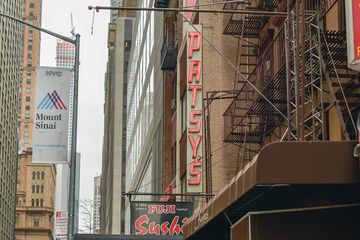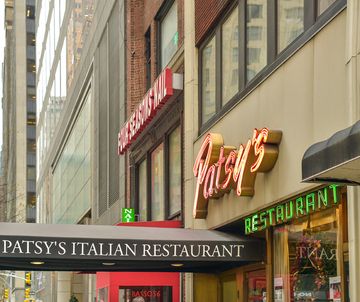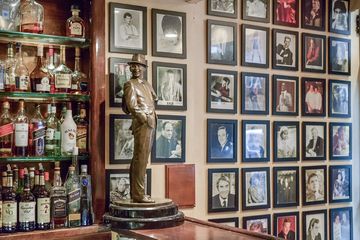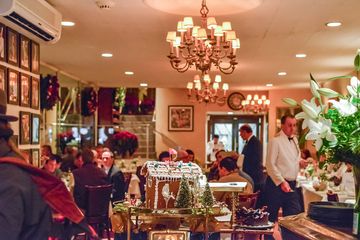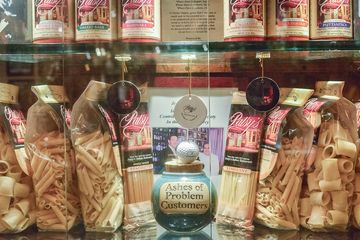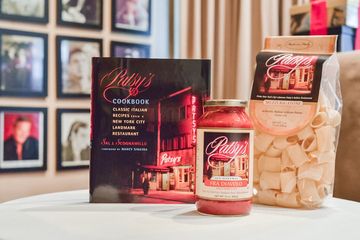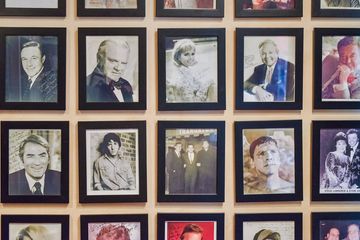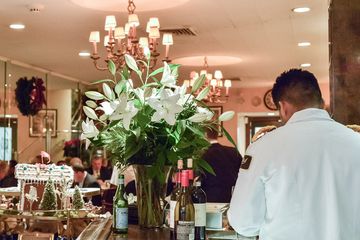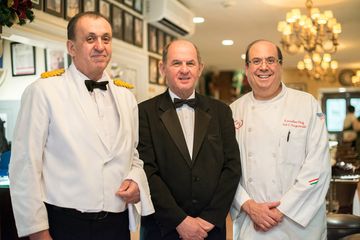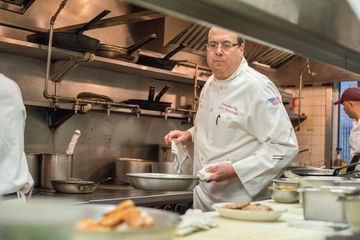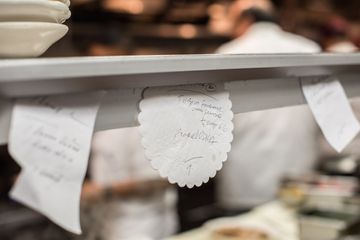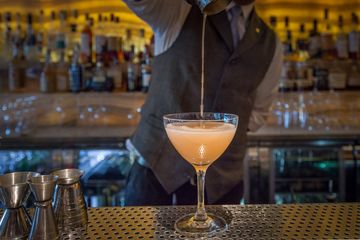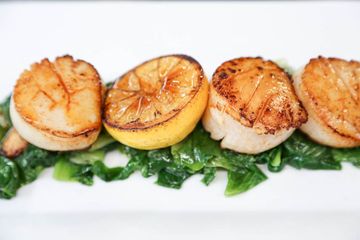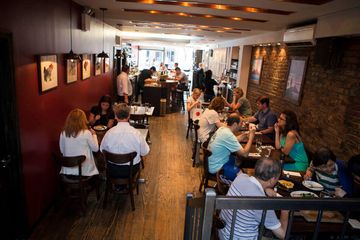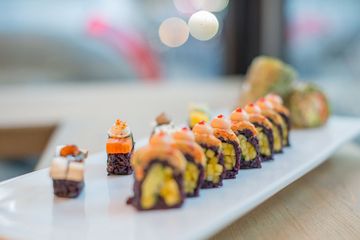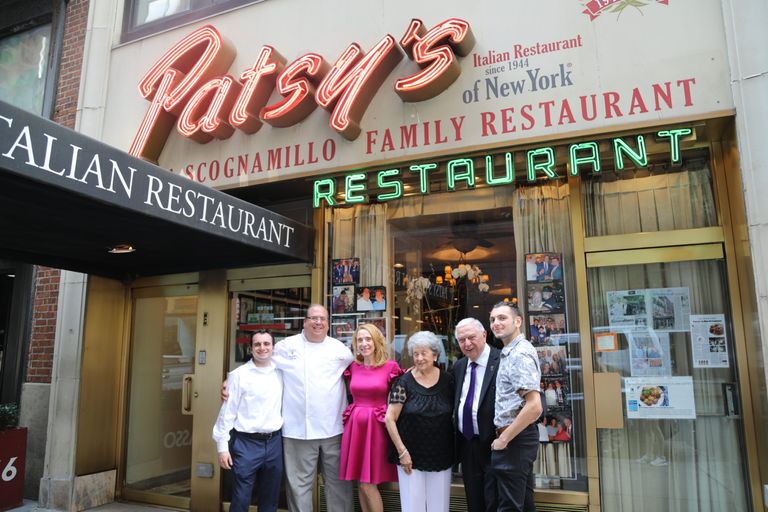
Patsy’s Italian Restaurant is truly a family affair. It only took a few moments before we were greeted by the many generations of the Scognamillo family: Joe - whose father started Patsy’s in 1944 - stood alongside his wife, and their grandson, Joe Jr. Shortly after, an uncle emerged from upstairs, and then we were joined by Sal, Joe senior's son, and the chef and current face of the legendary Patsy’s.
The family-oriented nature of Patsy’s is only part of what makes the restaurant feel like a flashback to a much earlier time. It was noon when we arrived, but the lights were low, and patrons were dressed formally, the atmosphere was hushed with soft conversation happening, glasses clinking lightly and classical music playing in the background. At the front of the restaurant, a bartender in a bow tie polished glasses. Scattered throughout the two floors of the space, the restaurant proudly boasts photographs of an extensive celebrity clientele beginning with Frank Sinatra to Frankie Valli and Michael Buble. For us, the scene was set.
How incredibly special it was when Sal invited myself and the members of the Manhattan Sideways team to sit down at a table with him - not only while he shared the fascinating stories of his family's legendary restaurant, but to taste some of the classic Patsy dishes. He was friendly, garrulous, and bursting with quips and anecdotes. Patsy’s celebrates its seventieth anniversary in 2014. An astonishing feat made only more so by the fact that its founder - Sal’s grandfather Pasquale, renamed “Patsy” at Ellis Island - came to the U.S. from Naples in 1928 and spent his first few years driving a Macy’s truck. Later, he became a busboy and eventually was able to open his own restaurant, Sorrento, in 1942. Although short-lived, two years later, he established Patsy’s. By the mid-50s, it was thriving, enabling him to purchase the entire building, doubling the size of his restaurant.
In the last seven decades, Patsy’s has borne witness to the multitude of changes that the city has undergone. While we ate, Sal called his dad over to tell us about 56th Street’s ongoing transformation. “Everything’s changed, everything,” Joe told us, showing us a photo of the block in the 1940s, when the building that now houses Patsy’s belonged to Atlantic Records. "Eighth Avenue was the end of the earth back then,” he recalled. The street was largely populated by car dealerships, and there was a gas station on the corner of the block. Joe went on to tell us that after its early commercialism, the street became dangerous for a while in the 1980s. Throughout, Patsy’s has endured - a constant in a sea of change.
Sal was proud to report that he maintains professional relationships with several of its original vendors, including purchasing its cheese for most of their seventy years, from fellow New York institution, Di Palo. He went on to say that they have employed many of the same workers for generations citing the restaurant’s night porter, an eighty-plus-year-old Argentine man who lives upstairs, as a perfect example. “If you become our friend you’re in trouble, because you’re our friend for the rest of your life!” Sal said cheerfully.
Though it has retained its old-world charm and hospitality, the restaurant has adapted extremely well to the demands of the twenty-first century. Sal maintains an active presence on Facebook and other social networking sites, and frequently appears on cooking shows (to date, he told us that he has been on The Today Show some twenty-five times). In honor of their fiftieth anniversary, they created their own pasta sauce line, and published their first cookbook in 2002. Scheduled for release in 2015, is their second, which features a forward by Ben Stiller.
At one point during lunch, Sal hit on the essence of his family’s restaurant, “I attribute our success to the three F’s,” he said. “Food, family, and Frank Sinatra.” The first two F’s may seem obvious; the third requires a bit of backstory. According to Sal, Tommy Dorsey brought Sinatra into Patsy Scognamillo’s first restaurant sometime in the early 1940’s, reportedly telling Patsy: “I’ve got this skinny kid from Hoboken you’ve gotta fatten up.” Patsy’s would become a favorite of Sinatra’s; Sal distinctly remembers bringing the singer in through the restaurant’s hidden side entrance in 1975, when Sal was just thirteen. Today, a statue at the bar memorializes Sinatra, and Joe wears a pin in his lapel that Nancy Sinatra gave him after Frank’s death.
At least in part because of Sinatra, the restaurant garnered a bit of a reputation as a gathering spot for old-time mobsters. Mario Puzo reportedly drew his inspiration for The Godfather’s Don Corleone from a series of people he encountered at Patsy’s. When the second Godfather movie was being filmed, director Francis Ford Coppola wanted to shoot a scene where a man is stabbed and then choked to death at Patsy’s front bar. Joe respectfully declined - “You think people want to think about that guy dying at the bar while they’re eating their spaghetti?”
For us, no such images disturbed our meal, as Sal presented us with Veal Milanese (Sinatra’s favorite), Eggplant Parmesan, Spirali Al Filetto di Pomodoro, Artichoke with a garlic and anchovy sauce and a classic plate of Spaghetti and Meatballs. The menu, like everything else at Patsy’s, is old-world Italian, featuring many of the same recipes that the family has been preparing since day one.
An extra treat was getting to spend time with Joe Jr. before he headed off to begin his college career. He spoke of his younger brother, Peter, who loves to cook and often helps Sal come up with menus. Joe Jr., however, said that he isn’t interested in cooking, “it is too hot in the kitchen." He went on to say, however, that he looks forward to managing the business side of the restaurant when he graduates. Sal proudly told us that his boys began working at Patsy’s at eleven, the same age his grandfather before him began. Though he has worked his way up over the course of his seven years at Patsy’s, Joe Jr. says that he still answers to his grandfather - “but that’s because he’s my grandfather, not my boss.” And then proudly stated, "I wrote my college essay on Patsy’s."
